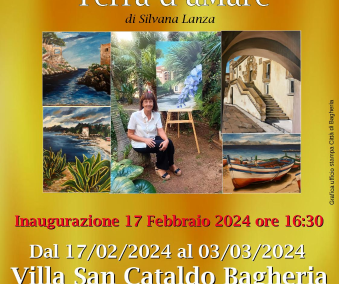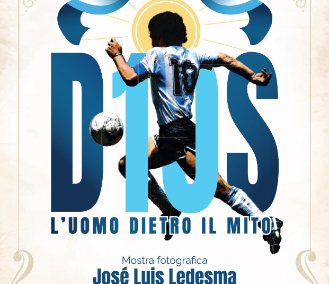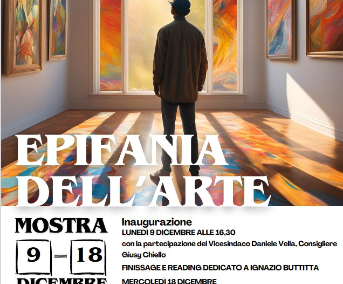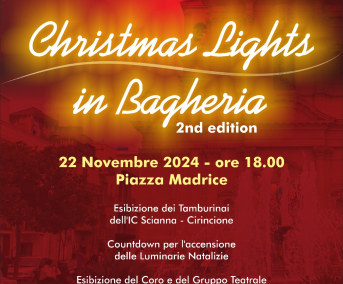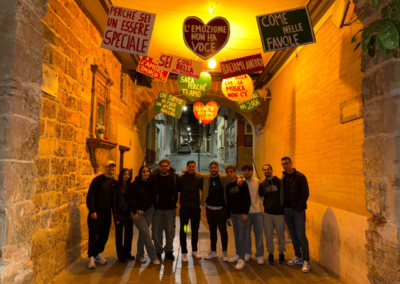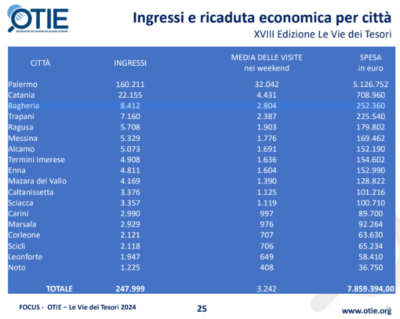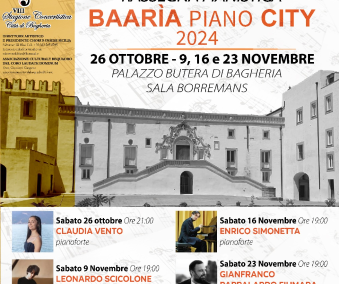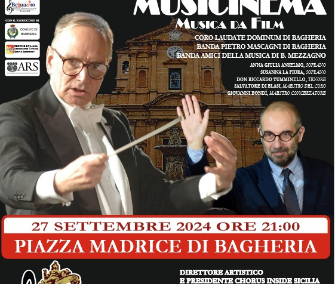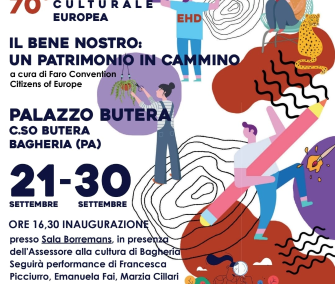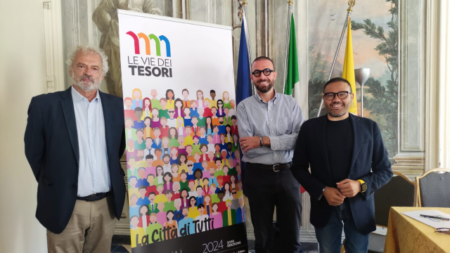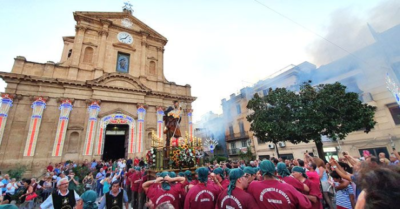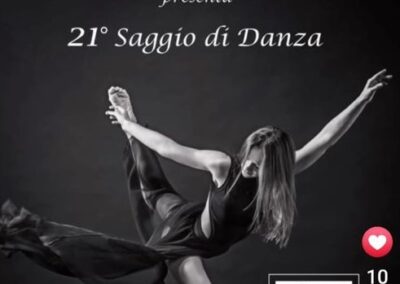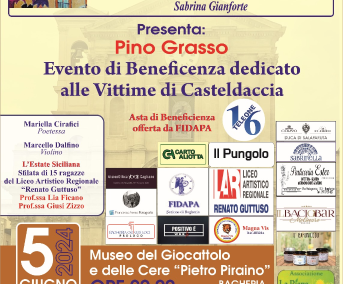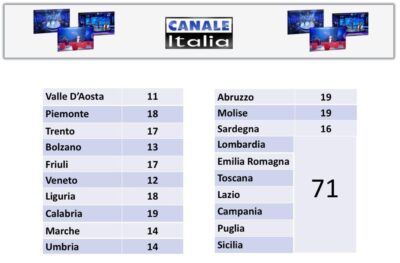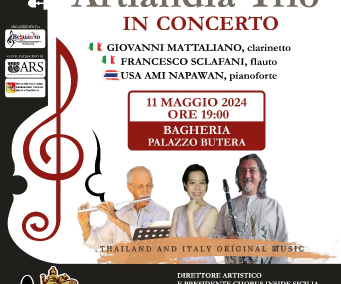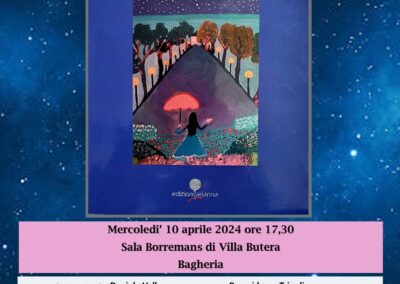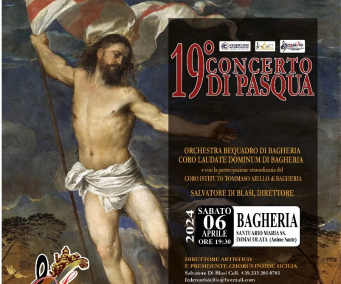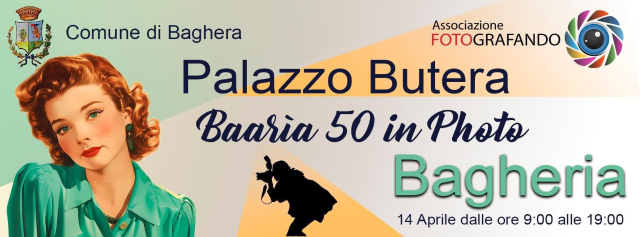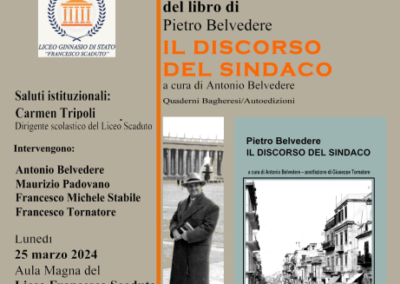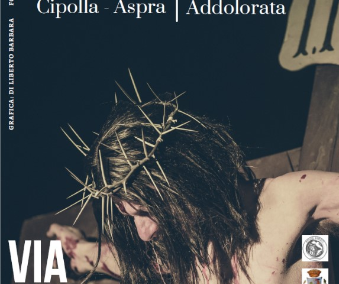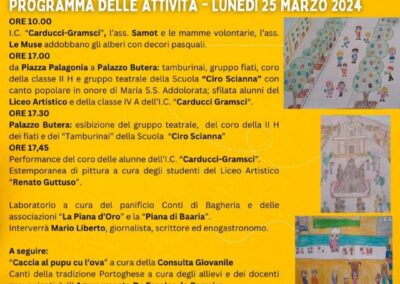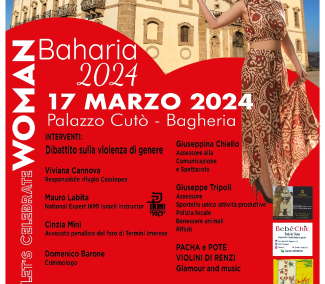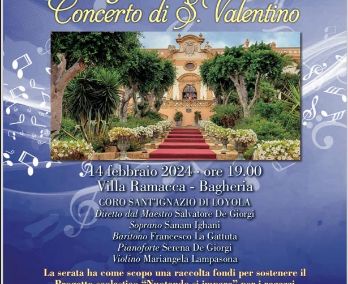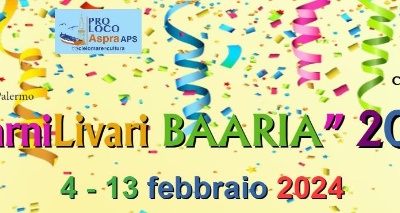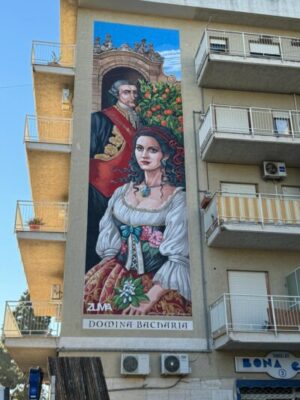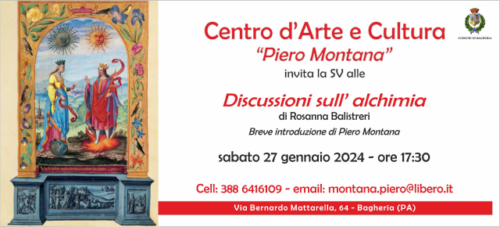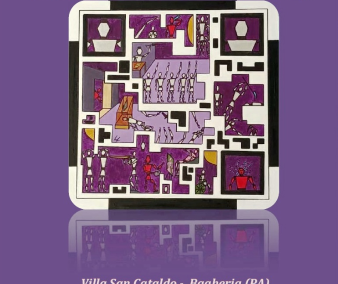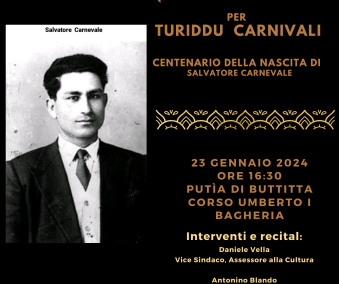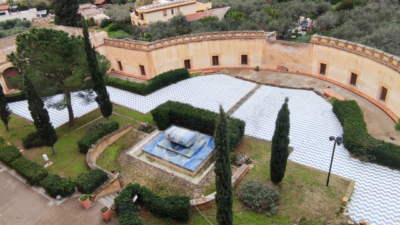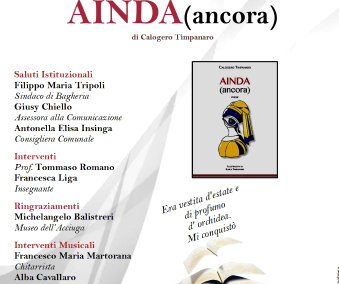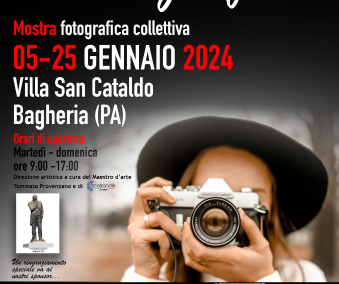On the occasion of the celebration of the 50th anniversary of the birth of the Guttuso Museum, Villa Cattolica is enriched with works, including the “Daneu Thshinke” collection
On view from Saturday, Feb. 24, 2024
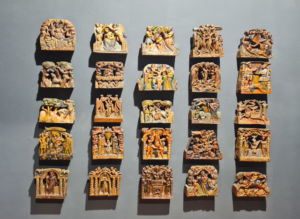
The works in the permanent collection of the Guttuso Museum in Villa Cattolica represent a composite nucleus that testifies to the variety and complexity of Sicilian figurative culture in the 19th and 20th and early 21st centuries. With the opening of the new exhibit on Saturday, Feb. 24, on the occasion of the celebrations of the 50th anniversary of the birth of the Guttuso Museum, the opportunity is taken to revive the interest of the now established audience of visitors and scholars by proposing a more articulate restructuring of the pre-existing museum itinerary.
To the Museum’s markedly Sicilian identity, evidenced by Renato Guttuso ‘s unequivocal realism and the relationship strongly linked to his historical time, the choices made by the Museum, since its inception, have wanted to accommodate other things, opening up to the territory and to individual works, telling completely different stories but chorally aimed at the common destiny of Art.
Among the donations, one stands out in terms of the number of works, 120 artifacts, and because it is linked to the cart tradition. It is the Daneu Thshinke collection. The collection is exhibited on the ground floor, in the lower bodies, and consists of 120 artifacts for the most part are related to “lace,” including: 67 central elements of spindle, 9 central elements of key, 19 keys, 7 sponde, 6 Catanese elements, 1 wheel, 1 spindle, a frame (mock sponde) depicting The Battle of Ponte Ammiraglio copy of Guttuso’s painting, 4 stanghe, 5 reuses.
Many of the donated pieces have been displayed in various exhibitions and repeatedly described in publications.
The municipal administration would like to thank Dr. Lisa Sciortino for her cooperation and for putting the donors in touch with the Guttuso Museum and the Bagheria municipal administration itself, led by Mayor Filippo Maria Tripoli.
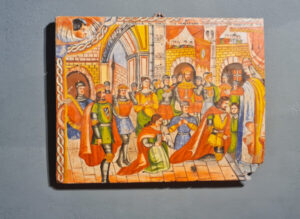
EVENTS CALENDAR
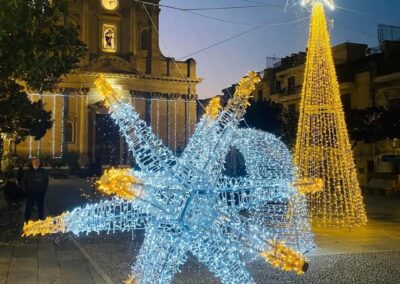
Bagheria: a Christmas full of emotions with a busy calendar of events. Here are those from 25 to 31 December 2024

Christmas events: “You are worth it – The hidden talents of our country” – Saturday 21 December in Aspra
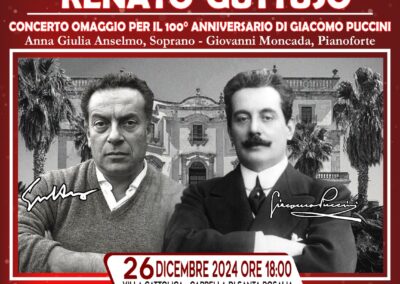
City of Bagheria Concert Season: Bagheria celebrates Puccini’s centenary with an exceptional concert on Renato Guttuso’s birthday – Thursday 26 December 2024
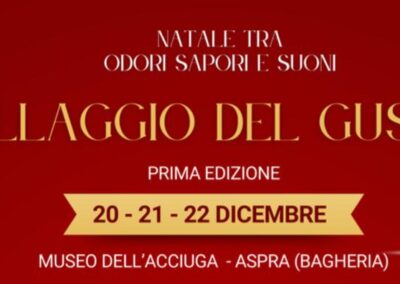
At the Museo dell’Acciuga in Aspra the Taste Village, the magic of Christmas amidst smells, tastes and sounds – From 20 to 22 December 2024
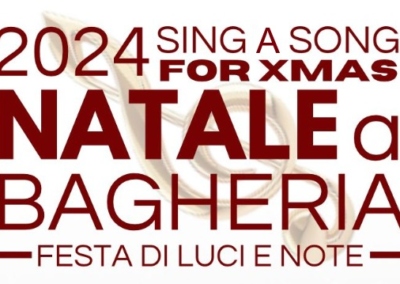
Bagheria lights up more and more at the Festa: here are the Christmas events for the week from 17 to 24 December 2024

In Bagheria the Living Nativity Scene of the Maria SS Parish. of Carmel – Visitable from 26 to 28 December 2024
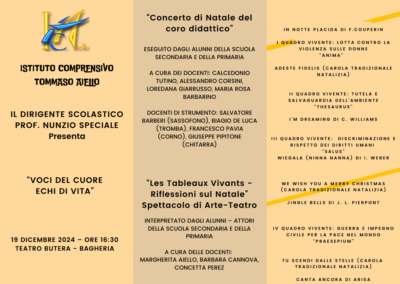
Tommaso Aiello Comprehensive Institute: Christmas Show “Voices of the Heart, Echoes of Life” – On 19 December 2024, at 4.30 pm at Palazzo Butera

Christmas Events 2024: Santa Claus’ House will be inaugurated in Butifar square on Saturday 14 December – Visitable from 14 to 24 December 2024
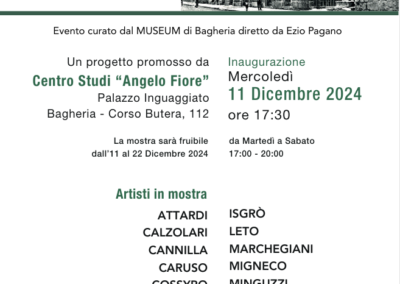
Palazzo Inguaggiato hosts the ‘Eclectic’ exhibition curated by Ezio Pagano Museum – Open from 11 to 22 December 2024

Data and communication: the NetPolitics Winter School in Bagheria. Lessons, workshop meetings with professors and experts – From 12 to 15 December 2024
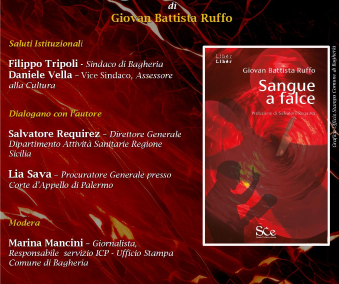
Bagheria hosts the presentation of “Blood to Sickle”: a novel that touches the heart – Wednesday, December 11, 2024, at 5:30 p.m.
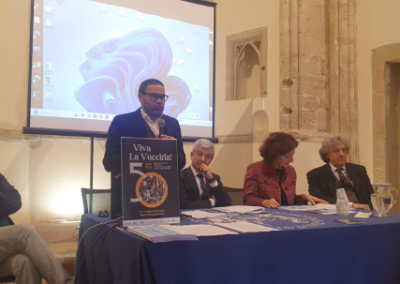
Celebrations for the 50th anniversary of Renato Guttuso’s Vucciria. The new face of the UniPa Museums. The inauguration of the staircase designed by Carlo Scarpa – From 19 to 22 December 2024
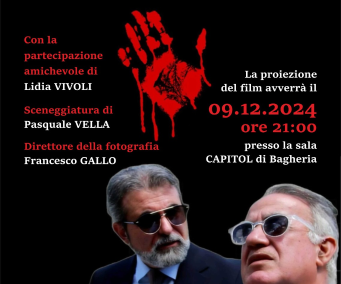
The municipality patronises the screening of ‘L’Imprenditore’. Film against pizzo by Pasquale Vella – Monday 09 December 2024, at 21:00, at the Capitol cinema
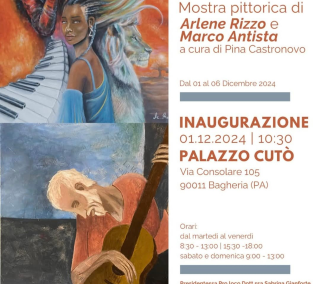
The exhibition “Color Experiences” by Arlene Rizzo opens edited by Pina Castronovo of Pro Loco Genius Loci – Sunday 01 December 2024
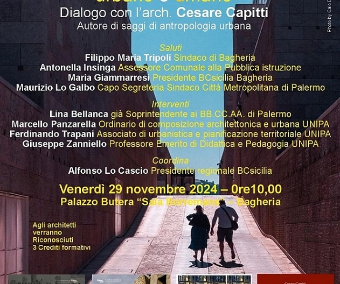
Bagheria, “Architecture at the service of human space”: dialogue with Cesare Capitti, author of essays on urban anthropology – Friday 29 November 2024
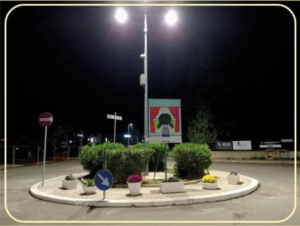
Bagheria pays homage to Ignazio Buttitta: the roundabout in via Sant’Ignazio di Loyola flourishes, curated by Carto Aliotta – Saturday 30 November 2024
Bagheria is approaching Christmas: here are the next events of the week of the rich program of events!

The Sfincione Fest among the successful food and wine events in Sicily: three days over 130,000 visitors in Bagheria!
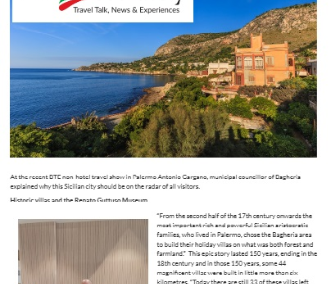
Bagheria: A hidden pearl revealed to BTE in an interview with “Italiabsolutely” by the managing director Onofrio Antonello Gargano
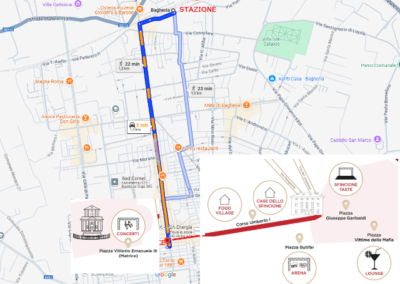
Sfincione Fest in Bagheria: all the information for arriving and parking – Scheduled from 22 to 24 November 2024

“Sfincione Fest di Bagheria”, the most delicious event of the year: Kitchen show by Andy Luotto, Giusina and the starred Tony Lo Coco. In the evening the music of Cugini di Campagna and Sugarfree – From 22 to 24 November 2024
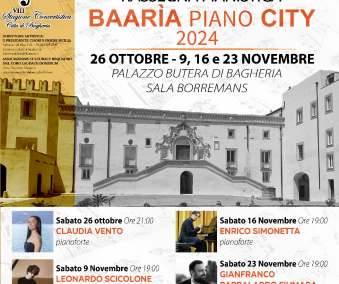
Concert season: “Baaria Piano City” – Piano review at Villa Butera. Last appointment Saturday 23 November 2024
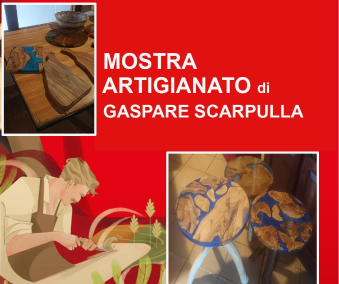
Gaspare Scarpulla craft exhibition at villa San Cataldo – Can be visited from November 26, 2024 to December 8, 2024

Bagheria is preparing to have its excellence tasted at the Sfincione Fest: Bagheria products will be on display at the city’s booth – November 22 to 24, 2024
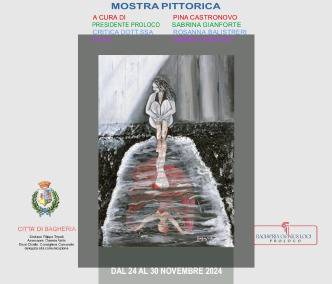
“Emotions”: Personal exhibition by Grazia D’Agata at Palazzo Cutò – Visitable from 24 to 30 November 2024
Bagheria lights up: a Christmas full of events and initiatives. The program was presented at a press conference – November 13, 2024
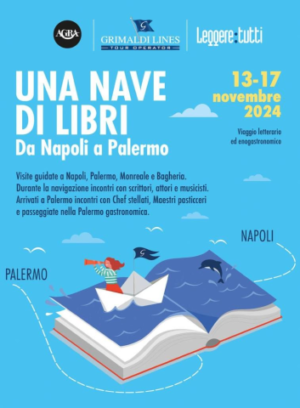
Bagheria protagonist of the “Ship of Books”: a journey through culture, art and taste – November 15, 2024
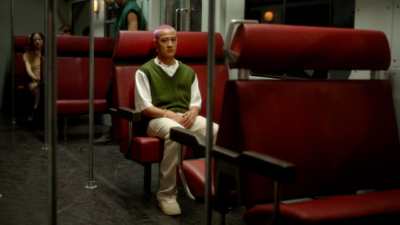
Le Notti d’Oro’ (The Golden Nights) returns to Bagheria, the festival of the best short films of the year awarded by Film Academies around the world – From 20 and 21 November 2024

The Sfincione Fest in Bagheria returns: three days of show cooking, tastings and performances – 22 to 24 November 2024
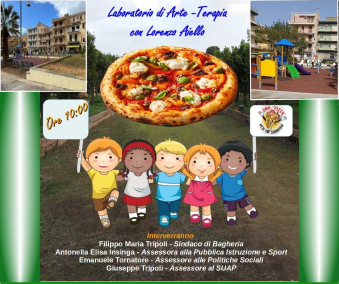
‘Una Pizza per Un Sorriso’ changes location. It will take place in piazzetta Butera – Sunday 10 November 2024

Golden Smartphone Award 2024: from tomorrow you can vote for the ‘Bagheria Attiva’ project – From 08 to 20 November 2024
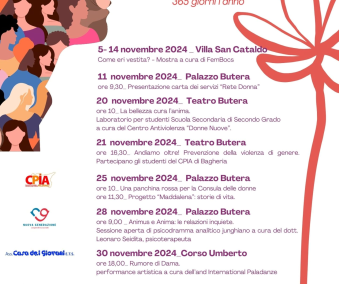
‘Beauty heals the soul’: Series of events to celebrate the month against Violence Against Women – From 05 to 30 November 2024

Last hours to register for B2B meetings for accommodation facilities at the Borsa del Turismo Extralberghiero (BTE)
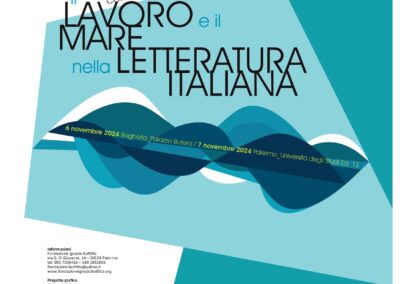
Study Conference: Work and the Sea in Italian Literature at Villa Butera – Wednesday, November 6, 2024
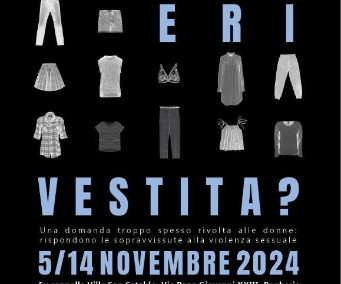
Opening of the exhibition: “How were you dressed?” at Villa San Cataldo – On view from November 05 to 14, 2024
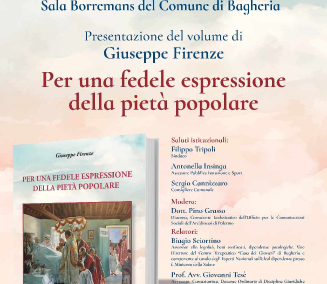
Presentation of the book: “For a faithful expression of popular piety” by Joseph Florence – Sunday, Nov. 3, at Villa Butera
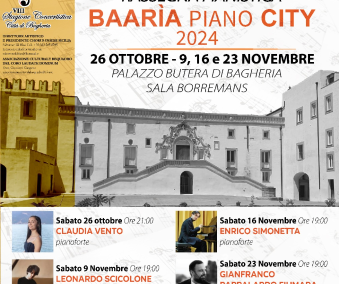
Concert Season City of Bagheria, starts the Piano Review “BAHARIA PIANO CITY” – Saturday, October 26 at Villa Butera

“Young people celebrating: Colors and rhythms of India” at the Don Milani Centre – Saturday 26 October 2024
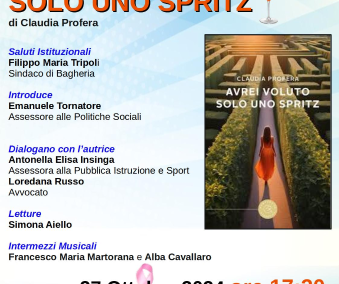
“I Only Wanted a Spritz” is presented at Villa Butera: An intimate journey through the pages of a book about life, love and resilience by Claudia Profera – Sunday, October 27, 2024

Bagheria protagonist at the Borsa del Turismo Extralberghiero – An informational meeting on October 22
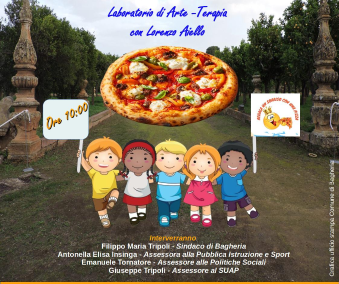
“A Pizza for a Smile” at Villa San Cataldo: An Art Therapy Workshop that Unites Everyone – Sunday, Nov. 10, 2024

Bagheria prepares for a weekend of engines with the final of the ACI Circuiti Cittadini National Trophy – October 26 and 27, 2024
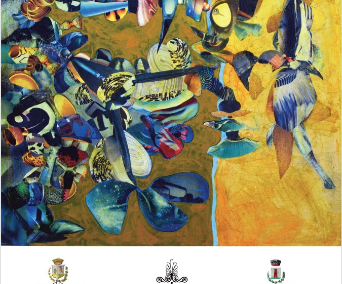
Opening of the exhibition “C’Arte d’arte” by Nino Raia at Villa San Cataldo – Sunday, Oct. 20, at 6 p.m.
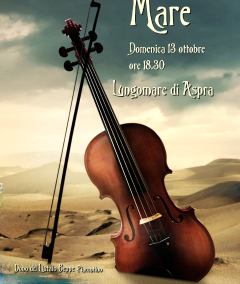
The seaside hamlet of Aspra is enriched with a new work of art: “Il Violino Sul Mare” sculpture by master luthier Beppe Piacentino is inaugurated – Sunday, October 13, 2024
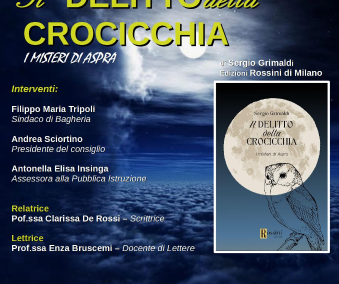
Book presentation: “Crime of the Crossroads – the mysteries of Aspra” at Villa San Cataldo – Saturday, October 26, 2024
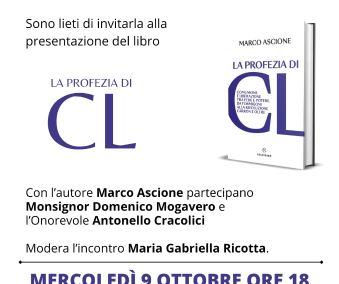
In the presence of the author presentation of the book “The Prophecy of CL” by Marco Ascione: discussion between Monsignor Domenico Mogavero and the president of the commission Regional Anti-Mafia Committee Antonello Cracolici – Wednesday, Oct. 09 at Villa Butera
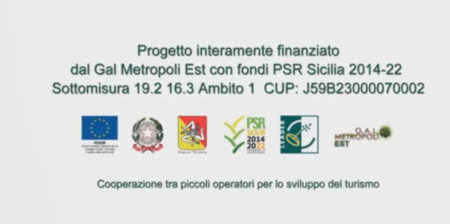
Bagheria celebrates its identity with a journey of discovery through the Baaria Plain with the presentation of the video of the project to promote and develop the tourist-cultural-gastronomic circuit of the Plain of Baaria – Monday, October 7, 2024
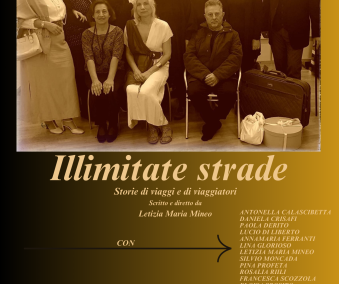
‘Unlimited Roads – Stories of journeys and travellers’ theatrical performance at the theatre of villa Butera – Saturday 19 October 2024

Bagheria goes international with “Caring, Taking Care. A weekend dedicated to art and caring – The exhibition opening and press conference will be held on Thursday, Oct. 3, 2024
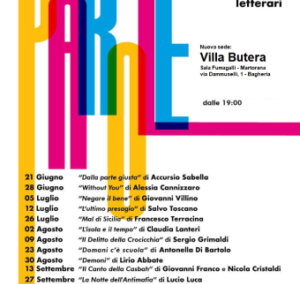
“Tramonti di parole”: at Villa Butera “The Night of the Anti-Mafia” by Lucio Luca – Friday 27 September 2024
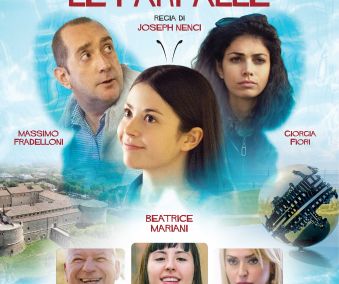
“Ancora Volano Le Farfalle” arrives in Bagheria: a story of life and inclusion. Film event, sponsored by the Municipality of Bagheria – Tuesday 8 October, at 9.00 pm
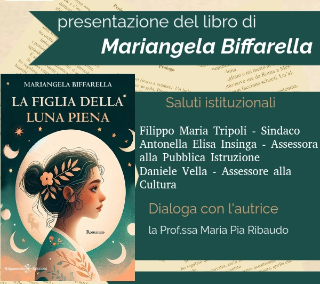
In Bagheria the presentation of the novel “The daughter of the full moon” by Mariangela Biffarella – Saturday 5 October at 6pm
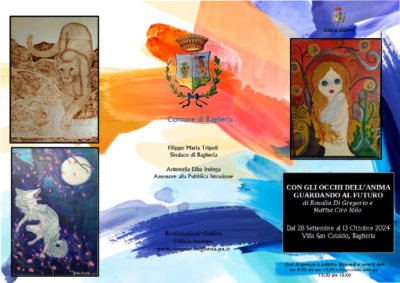
The exhibition “With the eyes of the soul looking to the future” opens by Rosalia Di Gregorio and Mattia Ciro Milo – Saturday 28 September 2024

“CAREful Details” Photography and Visual Art Exhibition curated by Arrigo Musti with the patronage of the Municipality of Bagheria. From 4 October to 4 December 2024 at the Guttuso Museum in Villa Cattolica
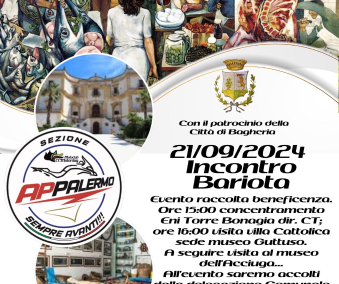
Motorcyclists for solidarity: the Bariota Meeting of the CC Motorday – Palermo Section – Saturday, September 21, 2024
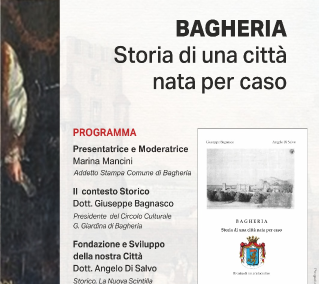
A journey through history with “Bagheria, History of a city born by chance.” The book by Giuseppe Bagnasco and Angelo Di Salvo is presented at the Villa Butera theater – Sunday, September 22, 2024
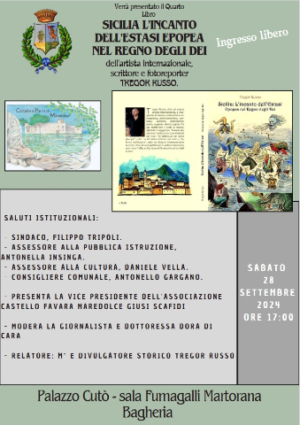
Bagheria celebrates the most authentic Sicily with Tregor Russo’s book – Saturday 28 September 2024, at Villa Aragona Cutò
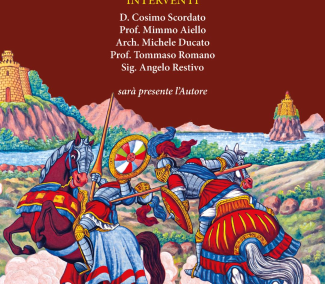
Bagheria celebrates the history of the “Sicilian Cart” with Lisa Sciortino’s book – Wednesday, September 25, at 6 p.m., at Villa Cattolica
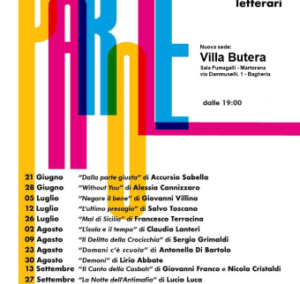
“Sunsets of Words”: Gaetano Perricone with his book ”The Last Game” – Friday, Sept. 20, at Villa Butera, Bagheria

Adverse weather conditions: events of the feast of Aspra’s patron saint are postponed to Sunday, Sept. 22, 2024
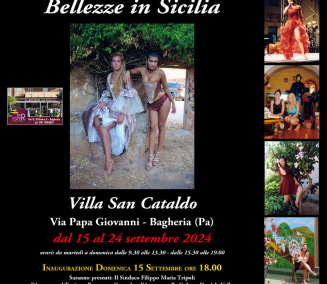
Bagheria celebrates the beauty of Sicilian women with exhibition by Carlo Giammarresi at Villa San Cataldo – Sunday, September 15, 2024 at 6:00 p.m.
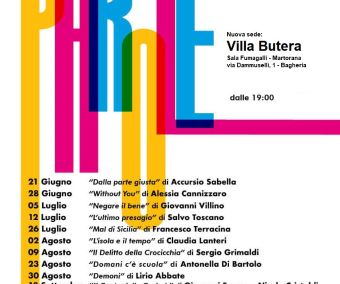
“Tramonti di parole” at Villa Butera: “The Song of the Casbah” by Giovanni Franco and Nicola Cristaldi – Friday, September 13, 2024

At the Guttuso museum “The rules of the game” by Massimo Kaufmann. From 15 September to 15 November 2024 at Villa Cattolica
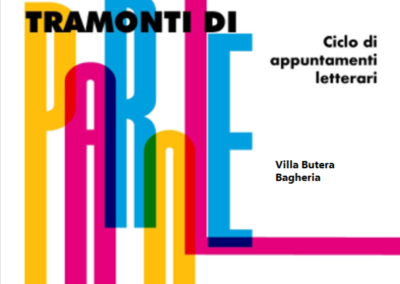
“Tramonti di parole”: The review changes location. The events in Bagheria, at villa Butera! – Friday, September 13, 2024
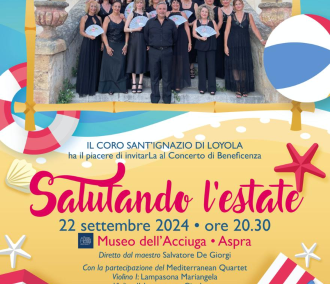
“Greeting the Summer” at the Anchovy Museum concert by the St. Ignatius of Loyola choir conducted by Maestro Salvatore De Giorgi – Sunday, September 22 at 8:30 p.m.
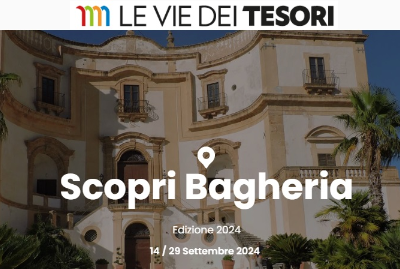
Bagheria prepares to host the 8th edition of “The Ways of Treasures”. Press Conference Monday, September 09, 2024
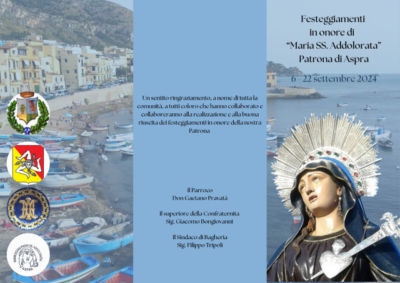
Aspra is preparing to celebrate its patron saint. A rich program of religious, musical and entertainment events – Sept. 08 to 15, 2024
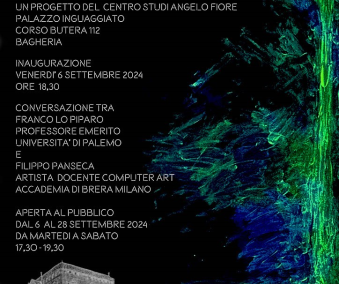
Exhibition opening: “Energy Reveals Post-Anthropocene Bionic Art” by Filippo Panseca – On view from September 06 to 28, 2024

Aspra lights up for St. Lawrence: First “Night of Stars” literary party, space for our four-legged friends, with focus on Leishmaniasis and presentation of the book by veterinarian Gino Gagliano – Saturday, Aug. 10, 2024
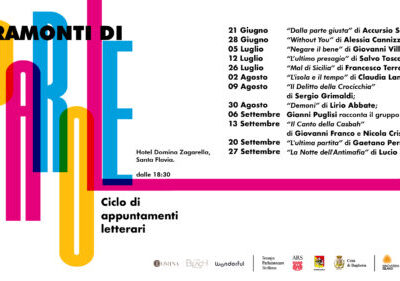
Tramonti di parole: “Il Delitto della Crocicchia” of Aspra by Sergio Grimaldi – Friday, Aug. 09 at the Domina-Zagarella

Bagheria is tinged with retro music: the Gate 4 bring to the stage “100 lira on vinyl” and opens with the exhibition “Freestyle art fusion in Butera Palace” – Thursday, August 08, 2024

Feast of St. Joseph: Closes the feast of the patron saint today, showman Nino Frassica performs in the square – Monday, August 05, 2024
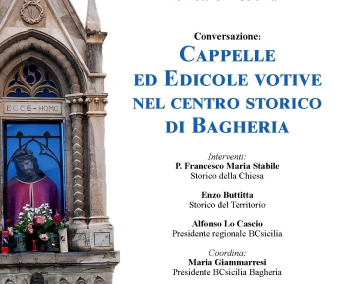
The Nights of BCsicilia: conversation on chapels and votive aedicules in the historic center of Bagheria – Friday 02 August 2024 at 9.00 pm
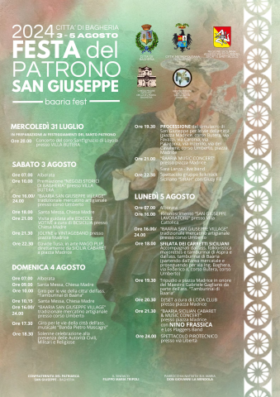
Baarìa Fest 2024: Presented the program of the festivities in honor of Bagheria’s patron saint, St. Joseph. Star of the last day the showman Nino Frassica – Wednesday, July 31, 2024

In Bagheria 2nd edition of “PICCOLO FESTIVAL”: Angelina Mango, only date in Sicily, BNKR44 and the hard-pop duo Santi Francesi. Opening acts Angelo Sicurella, Kid Gamma and Soap – Friday, August 02, 2024, at the Little Urban Park.
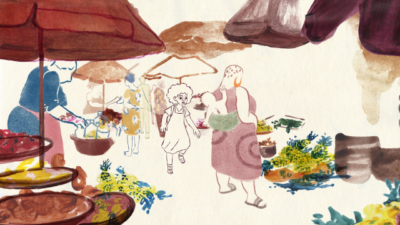
Turning point for the 10th edition of Animaphix – New Contemporary Languages Film Festival – Friday, July 26 at 6 p.m.
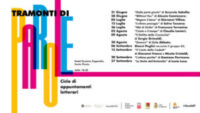
Fifth appointment with “Tramonti di parole”: “Mal di Sicilia” by Francesco Terracina Friday, July 26 at the Domina-Zagarella
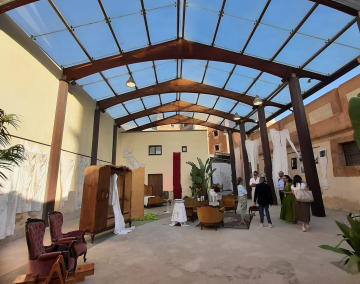
Tenth edition of Animaphix Film Festival. A rich program that also includes exhibitions and video installations – Visitable from July 22 to 28, 2024
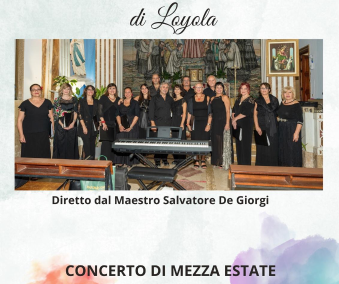
Midsummer concert by the St. Ignatius of Loyola choir at Villa Butera – Wednesday, July 31 at 8:30 p.m.

The season of events and concerts at Bagheria’s Little Urban Park kicks off. The mayor of Bagheria: “Bagheria more and more musical hub for young people.” – Starting on Saturday, July 20, 2024

Kicking off on Monday, July 22 is the 10th Animaphix. New Contemporary Languages Film Festival – Scheduled for July 22 to 28, 2024
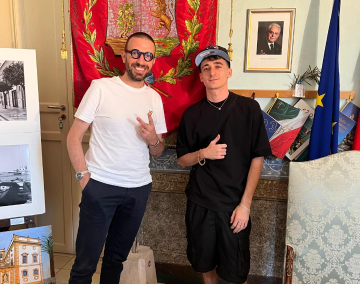
Premiering at Villa Butera, “Una Notte” the new single by producer Achille G – ft. VillaBanks and Baby K. – Thursday, July 18 at 10:30 a.m.

Opens its doors with a concert by “Giovanni Sollima” Animaphix “New Contemporary Languages Film Festival” – Monday, July 22, 2024 at Villa Cattolica
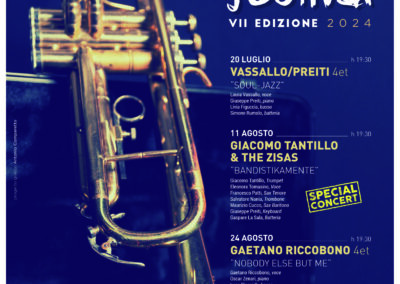
Seventh Edition of the “Blue Arch Jazz Festival”. Music at Sunset – It will start on July 20 and end on August 31, 2024

‘Tramonti di parole’, literary review sponsored by the Municipality of Bagheria: at the Domina-Zagarella ‘L’ultimo presagio’ by Salvo Toscano – Friday 12 July 2024
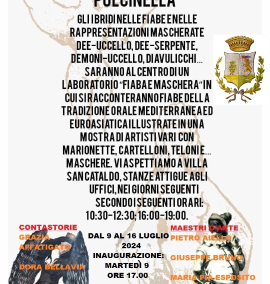
“From Virgin – Swan to Punchinello”. Fairy tale workshops and exhibition of various artists at Villa San Cataldo – July 09 to 16, 2024
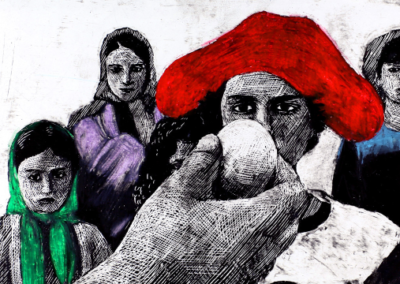
A Sicilian premiere arrives at the 10th edition of Animaphix – Film Festival “Invelle” the long-awaited feature film by award-winning animation director Simone Massi – Tuesday, July 23, 2024 at Villa Cattolica

“Sunsets of Words” literary review sponsored by the City of Bagheria: “Denying the Good” by Giovanni Villino – Friday, July 5, 2024 at the Domina-Zagarella
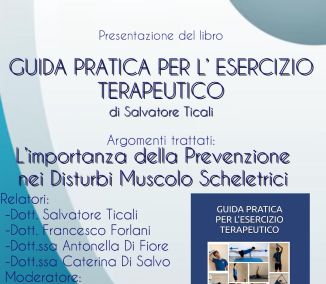
Presentation of the book: “Practical guide for therapeutic exercise” by Salvatore Ticali at villa Butera – Saturday, July 13, 2024
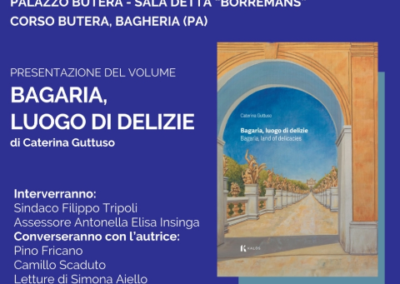
“Bagaria place of Delights” the book by Caterina Guttuso is presented at villa Butera – Saturday, July 6, 2024
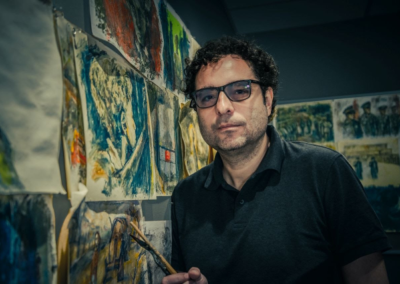
Cellist Giovanni Sollima opens the 10th edition of Animaphix New Contemporary Languages – Film Festival with “Sonámbulo” cine-concert inspired by the works of director and artist Theodore Ushev, who will receive the Guttuso Prize 2024 – Starting July 22-28, 2024 at Villa Cattolica.
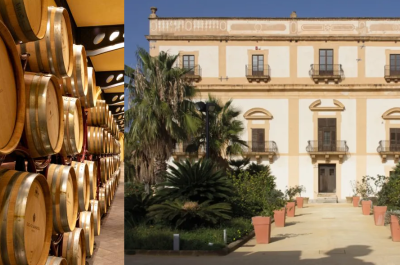
Duca di Salaparuta, 200 years to celebrate with Bagheria between art and wine. A documentary to celebrate the beauty of Sicily – Thursday, June 27, 2024 at Villa Cattolica
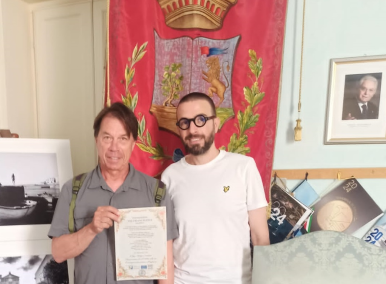
Francigena Paths in Bagheria: a pilgrim at Villa Butera meets with Mayor Tripoli – Wednesday, June 19, 2024

“Sunsets of Words” Author meetings at the Domina-Zagarella. Among the sponsors is the City of Bagheria – Starting June 21 through Sept. 27, 2024
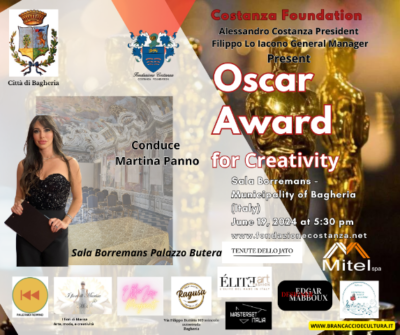
Costanza Foundation awards the prestigious Oscar for creativity: Bagheria international scene! Wednesday, June 19, 2024 at Palazzo Butera
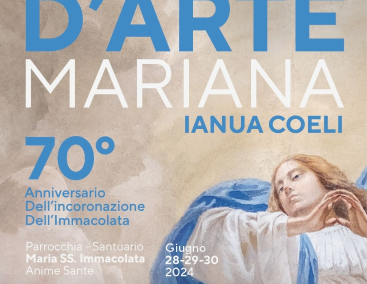
Marian art exhibition “Ianua coeli” at the Shrine of Mary Most Holy Immaculate – Can be visited from June 28 to 30, 2024
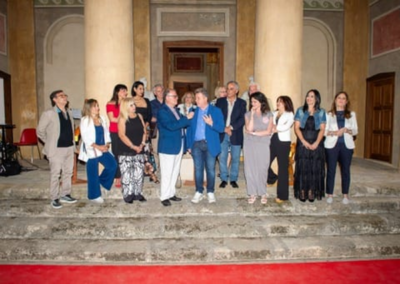
Works by “Artists Of June 25” featured at the Charterhouse until July 5 – Can be viewed at the Toy and Wax Museum

Villa Palagonia: 1st appointment of “The Palagonia Musicians.” At the Prince’s Theater “Pura Gitana” – Friday, June 07, 2024 9 p.m.
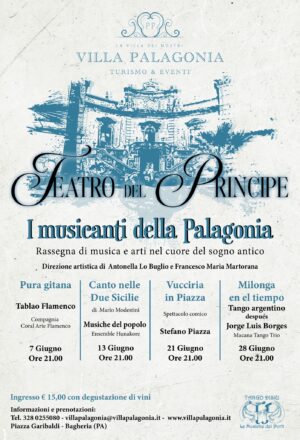
Villa Palagonia: at the Prince’s Theater “The Musicians of Palagonia” – Open to the public from June 07 to 28, 2024

Salaparuta wineries in Casteldaccia: photographs of New York by Roberto Sardina – The exhibition can be visited from May 18 to June 17
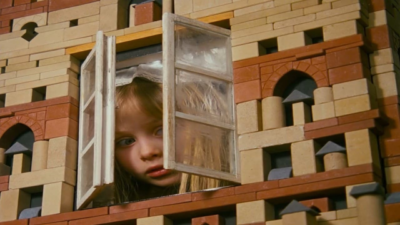
The Animaphix festival opens its 10th edition with Svankmajer Day: A Tribute to Film Noir Surrealism – Tuesday, April 30, 2024
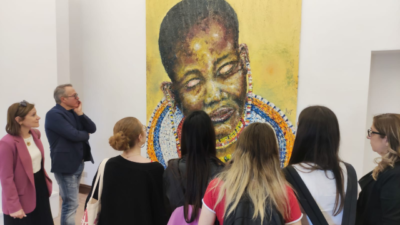
50th Guttuso Museum: ‘Tales of the artist: students at the museum’. 2nd meeting aimed at students of the Guttuso Art School in Bagheria met Arrigo Musti – Thursday 11 April 2024
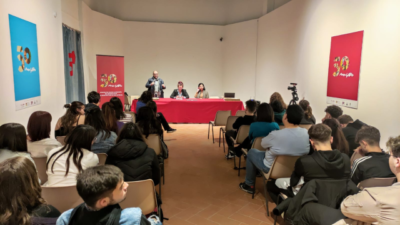
50th Guttuso Museum: “Tales of the artist: students at the museum”. 1st Meeting addressed to the students of the Guttuso Art School of Bagheria with Michele Ducato – Today 10 April 2024
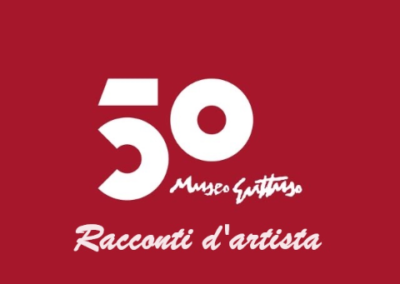
50th Guttuso Museum: “Artist’s Tales: students at the museum” kicks off. Cycle of educational meetings for students to meet 5 local artists at the Guttuso Museum

LIONS DAY 2024 in Bagheria. Free screening and entertainment for children at the “Giuseppe Bagnera” Primary School – Sunday, April 14, 2024
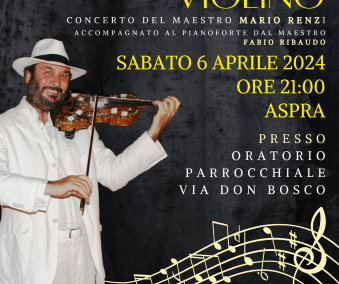
“Magic of a Violin”: Benefit concert at the parish oratory. Maria Santissima Addolorata of Aspra – Saturday, April 06, 2024

Aspra: “…Walking, Listening…”. Musical entertainment on the seafront every Sunday in April – From 07 to 28 April 2024
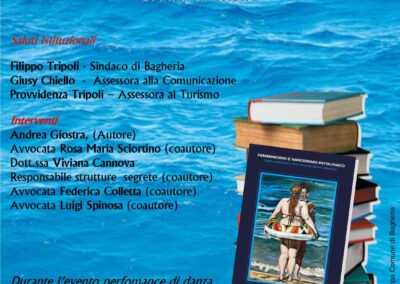
Presentation of the essay: ‘Feminicide and Pathological Narcissism’ at the Villa Butera Theatre – Friday 05 April 2024

“To each his talent: the various forms of Communication.” Day dedicated to Inclusion at villa San Cataldo – Saturday, April 6, 2024

2nd Edition of the “SMALL FESTIVAL” in Bagheria. Here are the names of the first two guests: ONLY DATE IN SICILY by ANGELINA MANGO winner of Sanremo Festival 2024 and the revelation band BNKR44 – Friday, August 2 at the Small Urban Park
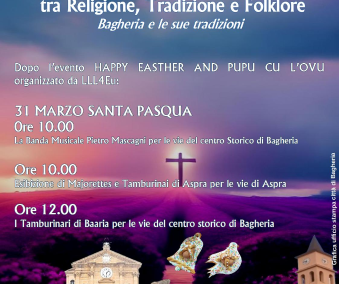
Holy week in Bagheria between religion, tradition and folklore: “Holy Easter” – Sunday, March 31, 2024
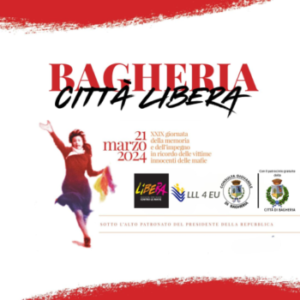
In Bagheria the “XXIX Day of Memory and Commitment in Remembrance of the innocent victims of mafia” Organized by LLL4EU, Youth Council of Bagheria and the Municipality of Bagheria – Thursday, March 21, 2024
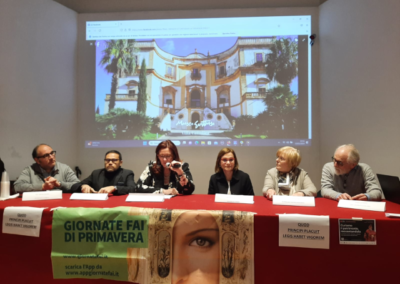
FAI Spring Days: In Bagheria protagonist Villa Cattolica and the Guttuso Museum – Saturday 23 and Sunday, March 24, 2024
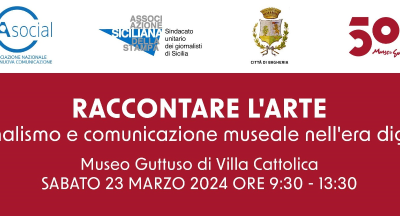
In Bagheria Assostampa, Municipality and Pa Social tell the story of art. Journalism and museum communication in the digital age – Saturday, March 23, 2024 at 09:30 a.m. at the Guttuso Museum.

Bagheria celebrates the Sfincia di San Giuseppe: 18th edition of the Sfincia Festival – Sunday, March 17, 2024
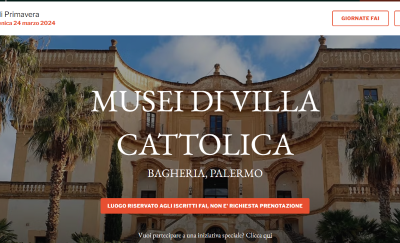
FAI Spring Days: In Bagheria. Press conference to present the Bagheria days on March 23 and 24 – Wednesday, March 13 at 3:30 p.m.
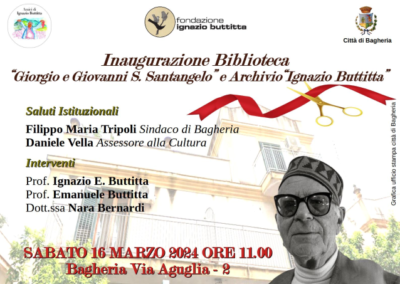
Opens its doors in Bagheria, on Aguglia Street, the Giorgio and Giovanni S. Santangelo Library and Archives “Ignazio Buttitta” – Saturday, March 16 at 11 a.m.
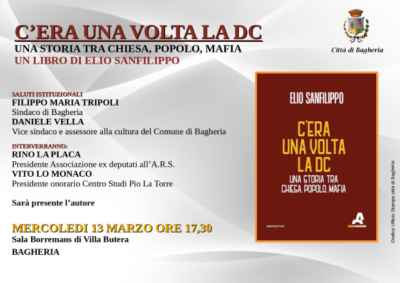
At Villa Butera the presentation of the book: “Once upon a time there was DC” by Elio Sanfilippo – Wednesday, March 13, 2024 at 5:30 p.m.
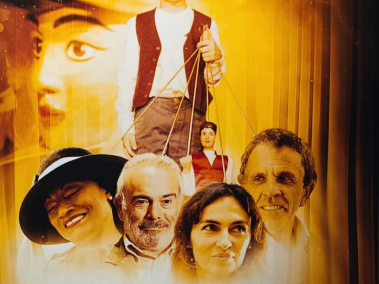
“The Theorem of Happiness” with the Bagheria actor Orio Scaduto at the cinema in Bagheria. The administration’s congratulations – March 9 and 10 at the Excelsior cinema
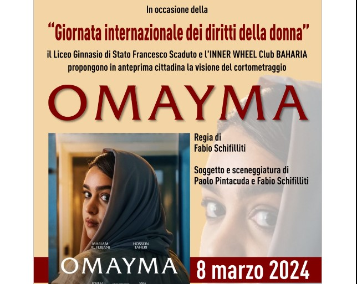
City preview of the short film “Omayma” by Fabio Schifilliti with co-screenplay by Paolo Pintacuda from Bagheria – Friday 8 March 2024 at 09.15 am at the Excelsior cinema
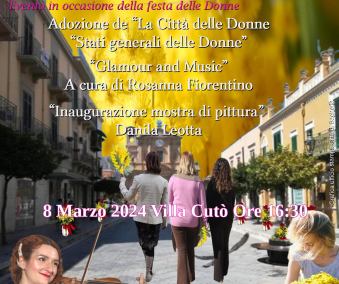
8 March: Bagheria becomes “City of Women”. Event at Villa Cutò between civil commitment, fashion, music and art – Friday 8 March starting at 4.30pm
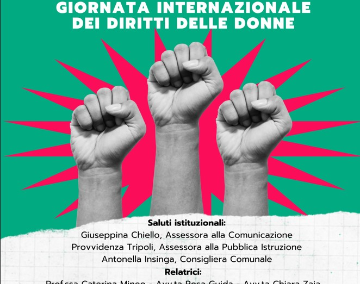
“March 8 International Women’s Rights Day”: an event organized by the FemBocs International Transfeminist Collective and the City of Bagheria – At Villa Cutò on Friday, March 8 at 11 a.m.
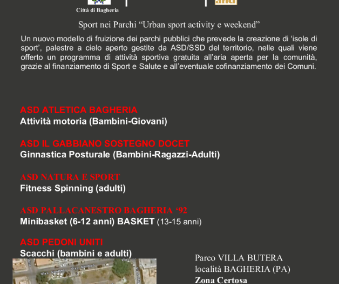
The City of Bagheria inaugurates “Sports in the Parks” and enters the Sport and Health open-air gymnasium – Saturday, March 9 at 4 p.m. at Butera Square
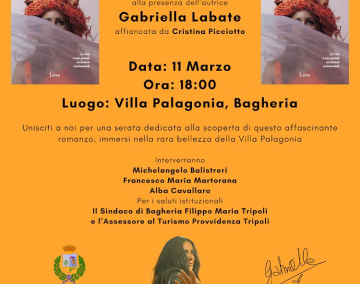
At Villa Palagonia book presentation: “Nudi” by Gabriella Labate. Proceeds from the sale of the book presentation in Bagheria will be donated to Biagio Conte’s Hope and Charity Mission – Monday, March 11, 2024, at 6 p.m.
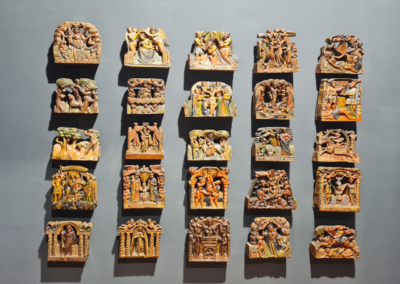
On the occasion of the celebration of the 50th anniversary of the birth of the Guttuso Museum, Villa Cattolica is enriched with works, including the “Daneu Thshinke” collection – On view from Saturday, Feb. 24, 2024

At the Villa Butera Theater “Desìata” the choral novel by Antonella Marascia – Friday, March 1, 2024, at 6 p.m.
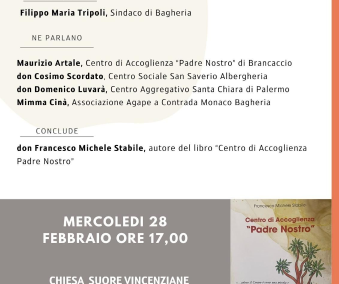
Presentation of the book: “Our Father’s Shelter Center” by Fr. Francesco Michele Stabile at the church of the Vincentian Sisters in Palazzo Butera – Wednesday, Feb. 28 at 5 p.m.
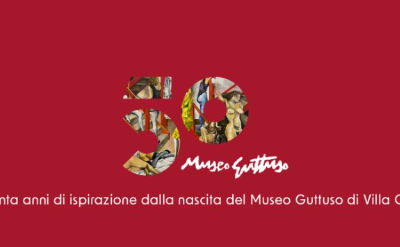
50th Birth of the Guttuso Museum: Saturday, Feb. 24 at 4:30 p.m. Press conference for the opening of the new exhibit on the second floor – Open to visitors starting at 6 p.m. Saturday, Feb. 24, 2024

CarniLivari Baaria 2024 concludes with “The carnival of Bagheria students” – Tuesday, Feb. 13 starting at 8:30 a.m.

“The Carnival of the Little Ones” continues CarniLivari Baaria 2024 – Monday, February 12 starting at 8:30 a.m.

Carnivarians Baaria 2024: “Carnival in progress.” – Thursday, Feb. 8 demonstration on Corso Umberto I
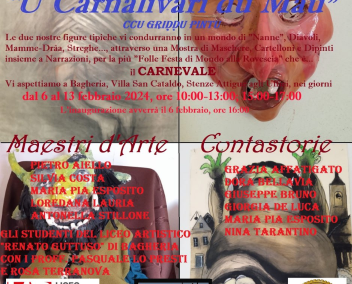
Carnilivari in Baaria: “U carnalivari du Màu” will be inaugurated on 6 February – Visitable until February 13th at Villa San Cataldo
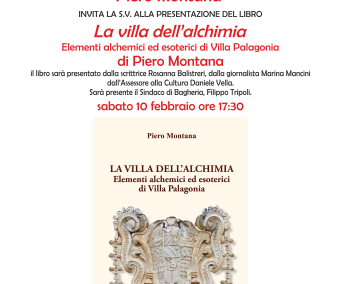
Presentation of the book, “The Villa of Alchemy. Alchemical and esoteric elements of Villa Palagonia” by Piero Montana – Saturday, Feb. 10 at 5:30 p.m.

Presentation of the book, “I am not a hero” by Roberto Ardizzone at the Anchovy Museum – Friday, Feb. 2 at 5:30 p.m.
